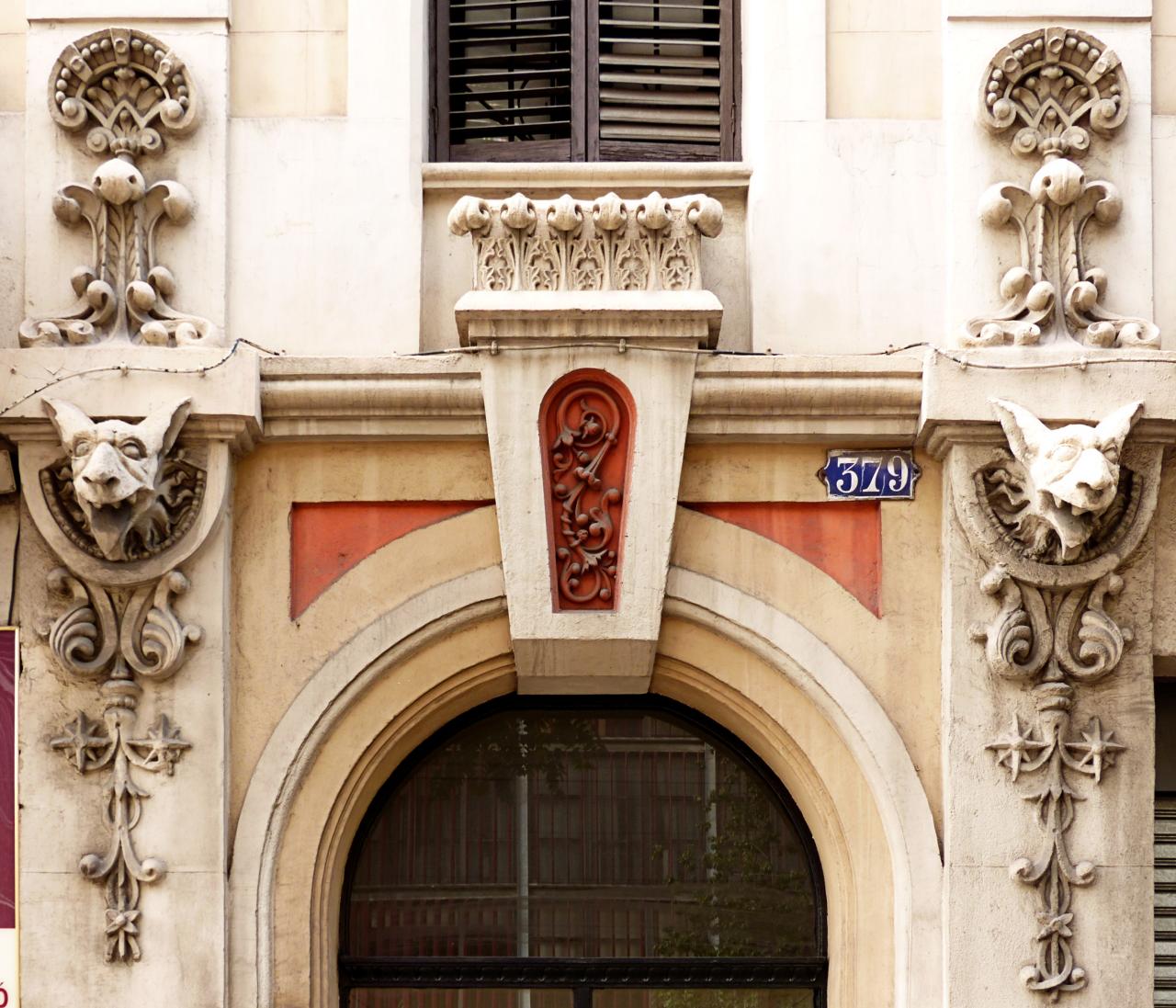#1266. Eclectic Facade with Chimeras: Detailed Portal of a Historical Art Nouveau Building
The image showcases an exquisite fragment of a historical building facade executed in an eclectic style with elements of Art Nouveau and Neoclassicism. The central element of the composition is an arched portal framed by rich decorative ornamentation made of light-colored stone. The arch features classical proportions and is surrounded by terracotta inserts, creating a color contrast with the main beige tone of the facade.
On both sides of the arched entrance are symmetrical sculptural elements in the form of grotesque masks resembling chimeras or gargoyles, which gives the building a mystical touch characteristic of Art Nouveau. These decorative heads are skillfully integrated into vertical compositions with floral motifs and volutes. Above the entrance, one can notice an elegant wedge-shaped keystone with a red-terracotta decorative insert containing an intricate floral ornament.
The upper part of the facade is adorned with finely crafted stucco elements featuring botanical motifs and decorative rosettes. Particularly interesting are the repeating vertical compositions that combine classical motifs with more expressive forms of the early 20th century. At the second-floor level, there is a window with louvered shutters, beneath which is a stone cornice with a decorative frieze.
The building bears the number 379, indicated on a blue plaque in the upper part of the facade. The overall architectural composition reflects attention to detail and high mastery of stone carving, characteristic of luxurious urban architecture from the late 19th to early 20th century, likely of Mediterranean or Southern European origin.
